the forecourt property market is buzzing with activity at the moment, with competition for sites fiercer than ever and prices spiralling to match. In fact, John Coulling, associate director of motor trade and roadside at Lambert Smith Hampton, describes the market as "on fire" compared to two years ago.
For sellers, this means now may be a good time to achieve maximum value from their business, and a number of retailers retiring from the industry have been doing just that. However, for those looking to buy, quality sites are proving harder to come by.
Mike Pearce, partner specialising in motor trade and roadside at Rapleys, says: "There’s been a resurgence of interest in the fuel sector and typically we would now expect a good site to attract at least 10 bids. The prices we’ve been achieving have also risen substantially."
Christie’s associate director corporate retail, Allen Shepherd, says the highest end of the market has seen sites go for in excess of £3m. At the lower end of the scale, a very poor rural site might fetch just under £200,000. David Collins, a partner at Adlers, agrees, saying he’s seen some very average sites go for as much as £1.75m. "They’ve been in good locations, but had seemingly little scope for improvement," he says. Whereas a few years ago a site was almost guaranteed to be worth more for alternative use, Collins adds that this is no longer always the case. "Although land values have continued to increase for residential and retail development, the differential has narrowed considerably, to the extent that an average-performing petrol station may now have an equivalent or even greater value than alternative use redevelopment," he says.
Shepherd singles out the Midlands and south west as having been particularly hot areas. Rural sites have also attracted strong interest, providing they have a good strategic location and a strong c-store offer.
A combination of factors is driving the resurgence of the market. John Coulling says declining site numbers following the oil companies’ rationalisation, and better-than-expected fuel margins have boosted operators’ confidence to expand their current premises and increase site numbers: "They have seen their income streams grow as site closures move sales to those stations left trading. Moreover, the introduction of Platts-related supply deals has not had the overly adverse effect on profitability that was initially predicted. Some operators are enjoying well-above-average margins, particularly as they are now in control of their fuel pricing," he explains.
Graham & Sibbald’s Chris Ellen, head of petroleum and roadside, adds that there are a lot of new-to-industry purchasers entering the market, particularly Asian c-store owners. These new players are often prepared to pay more than some of the traditional operators, he says.
The new breed of larger independents with increased financial backing have also been driving demand, with groups like Malthurst, Motor Fuels Group, Park Garage Group and Euro Garages said to be particularly acquisitive.
But while strong demand means that most independents’ site values have increased, there is always a downside. Ron Sanderson, founder of property consultancy Clarion Roadside, says: "The oil companies are probably coming to the end of their disposals and these tend to be very well-organised packages of sales, with preferred buyers who get first shout. This can leave smaller dealers with limited choice."
Mark Wilson, operations manager of the Fraser Group, says suitable sites are now few and far between, leading the company to move into the housing market. "We’re still actively looking for more forecourt businesses to buy, but so is everyone else and we won’t rush into it and spend silly money for the sake of it. We’ve broadened our horizons by buying a large piece of land which will be developed for housing, although our major focus is still forecourt retailing," he says.
== NEW-BUILDS ==
With fewer sites available, fewer still in the most profitable locations, some in the industry believe a spate of new-builds is inevitable. There were 37 new-to-industry sites built in 2005, according to the PRA. Of these, 30 were developed by the supermarkets and six were motorway service areas. Nesscliffe Services on the A5 was the only new-build to be tackled by an independent. PRA director Ray Holloway comments: "There have only ever been dribs and drabs of development in recent years and even the supermarkets have their limits. I do see there being an element of in-filling to come in development areas, although for an independent it’s much more attractive to buy an existing site from one of the major oil companies."
North west-based property developer, the Hurstwood Group, recently completed a new-build in Shrewsbury as part of a wider roadside scheme, with Spar wholesaler Tates taking a 25-year lease on a BP-branded site with a 4,000sq ft c-store. Tony Hindley, partner, motor trade and roadside at Rapley’s Manchester branch, acted on behalf of the Hurstwood Group, which is working on a second new-build site, and says that filling stations have become a more attractive proposition for developers. "The investment market now accepts filling stations as an acceptable form of investment, where it didn’t previously. Valuations have also moved on considerably, making it more viable for a developer to make a reasonable return," he says.
For an independent a new-build is an enormous risk, especially if it’s your only business. Without the comfort of an established throughput and shop sales, everything is based on estimates.
Jonathan James is an independent who relishes a challenge. He’s currently planning his second greenfield development, having bought a three-year option on a plot in Cambridgeshire. Subject to planning permission, he hopes to build a new forecourt - his biggest yet - with six pump islands, a 3,000-5,000sq ft Budgens-branded shop, 40 parking spaces and five-lane HGV overnight parking. He’s also planning a hand car-wash facility to compete with those that have taken trade from traditional car washes at his other sites.
James says: "Location is everything. The proposed site is on a major trunk road, on a roundabout and in a town that has few shopping facilities and no supermarkets. There’s a local population of around 10,000 at the moment and 1,000 new houses are being built in the area."
The size of the £2m development will make planning a minefield, with the scheme viewed as a major application, but James says: "It’s a win-win situation for me. Nobody else can buy that land at the moment and if the authorities did refuse permission then that plot - which could potentially be in competition with one of my other sites - will be protected for the future."
For those taking the safer option of buying, the ideal plot size is considered to be around half an acre, providing enough space to develop extra facilities and the all-important c-store.
As well as looking at the trade potential for a site, taking into account local competition and pricing, David Collins at Adlers warns buyers to ensure that any significant expenditure needed to bring it up to scratch is properly reflected in the price. "They should consider the age and condition of the equipment and whether or not any necessary investment will be reflected in improved sales," he says.
If you’re considering selling, Christie’s Shepherd says it’s vital to plan ahead, thinking carefully before making any changes to your business.
The fuel supply agreement is the most important thing, he says: "It can make a massive difference to the profitability and value of your business. Don’t think it won’t be your problem and go for a less attractive deal. Also, certain brands are more appealing than others. BP sites fetch more than any other brand because the brand is strong and the sites are seen as better quality."
If there’s a chance you could sell to one of the grocery chains then it’s probably not worth refitting the shop, as they’ll have their own specifications. "It’s more worthwhile putting your money into hardware that adds value, such as a car wash or an ATM," says Shepherd. "You could also get an alcohol licence - whether you introduce it yourself or not, it’s a great selling point. Or you could secure planning permission to extend the store. You don’t have to do it, but it could make a real difference to a buyer as planning can be a lengthy process."
Sanderson adds that it’s worth having your environmental report done ahead of any sale. This usually costs around £6,000. "With a report, you’ll know if there are any issues to be addressed and be in a stronger position to negotiate, rather than being held to ransom by a buyer at a later date, who will nearly always find a reason to knock down the price."
== LEASEHOLD ==
Generally the leasehold market hasn’t been as strong as freehold, although it does have advantages to offer and has seen activity of late.
Christie’s Shepherd says some people view renting as ’dead money’, but he says: "A business is different to a house because you’re still making money from that business even though you don’t own the property outright."
A major advantage is that you put less capital in and can get your money back more quickly, in a couple of years, compared to around 10 years with a freehold property, says Shepherd. This could allow you to expand more quickly. "And if you’re clever then you’ll have a first refusal clause written into the lease," he adds.
The main risk for an owner is that if the tenant fails in the business, they could be left with a shell of a site and a whole load of problems to sort out.
== ALTERNATIVE USE ==
While the number of sites leaving the industry has slowed, there’s still a strong market for alternative use.
Until recently the majority of sites were sold for residential development. However, Grahame Frank at Irving Quinn warns that some local authorities have temporarily suspended granting residential consent while they review their Local Development Frameworks (LDF), which replaces the old-style Local Plans. This has led to some sites going into lower-value commercial use, typically hand car wash operations.
A site sold without alternative planning consent will always be less valuable, says Phillip Plato, managing director of Plato Enterprises, specialists in roadside property.
== STAGE-TWO CLOUD ==
The market is expected to remain strong over the next year, but there is a dark cloud on the horizon that will start to affect values. Stage Two Vapour Recovery legislation will affect all new-builds, adding to construction costs.
"This will become more significant and there may be big costs associated with it," says Graham & Sibbald’s Chris Ellen. "Very few sites have all the requirements in place and purchasers will want to make sure they keep something back to fund putting that in," he concludes.
----
=== Retailer view ===
The Hull-based Sewell Group has six forecourts and is looking to expand to around 10 sites within a 60-70 mile radius. Managing director Patrick Sewell says: "Some companies seem to be becoming very numbers-orientated, but we’re more targeted. We want sites that we know we can develop. In some ways it’s better to look at ones that are under-achieving due to lack of investment. We bought our last site on this basis at Ferriby. It was around 15 years old, with a tired infrastructure. We’ve replaced 50-60% of the tankage, put in new pumps and facilities and are currently in the planning process to knock down and rebuild the shop to make it bigger."
----
=== Buyer’s shopping list ===
- Lambert Smith Hampton’s John Coulling says buyers are looking for a minimum throughput of 3.5m litres, supplemented by good shop sales and valeting facilities.
- The Fraser Group’s Mark Wilson says: "We’re not interested in anything less than 0.4 of an acre. Filling stations that survive in today’s marketplace need to be bigger and better. Customer expectations are higher and you need to get more on your plot."
- Allen Shepherd, Christie & Co, says oil companies are only really interested in acquiring "super-sites", where fuel volumes are huge and the retailing takes a back seat.
- Ron Sanderson, Clarion Roadside, says: "A key consideration is the tanks and environmental issues. Buyers should be looking for a more recent re-tanking or re-lining of the tanks."
- Mike Pearce at Rapleys says: "People are looking for urban locations as they focus on the shop side. Walk-on trade is important. Transient greenfield sites are less popular unless they’re in a very high-volume location on a major route."
----
=== Retailer view: Euro Garages ===
Euro Garages has doubled the size of its network over the past year. It now has 55 sites, with another eight due to come online in February. The majority of these are freehold sites, bought mainly from the oil companies, although a smaller independent group has also recently been acquired. Having initially focused on the north west, the company’s focus is now moving further afield, extending down into the Midlands and beyond. Managing director Zuber Issa says: "We’re just trying to build a profitable business. We’re looking for new opportunities and investing in our sites. If you have a good site, in a good location, with a good store, the trade will come itself."
The company has knocked down and rebuilt two sites, while 19 have Spar c-stores and eight have Subway franchises.





















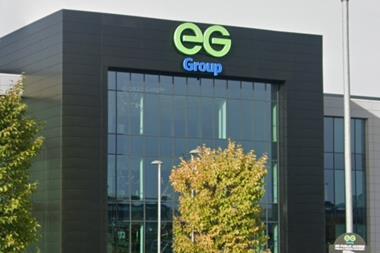


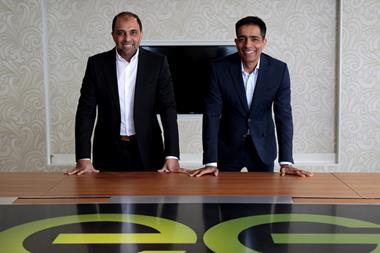
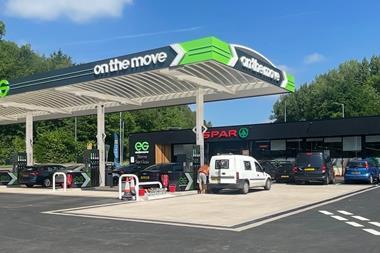


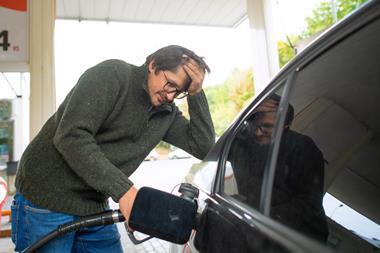
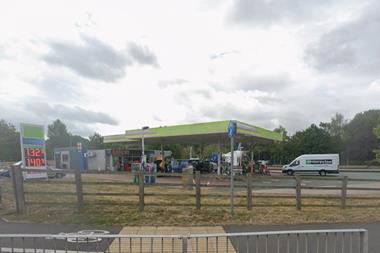
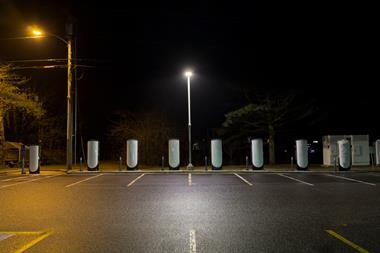
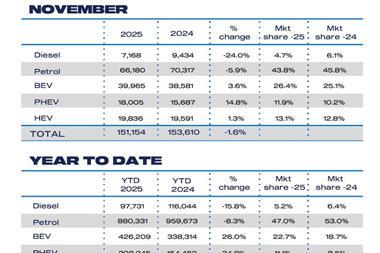

No comments yet